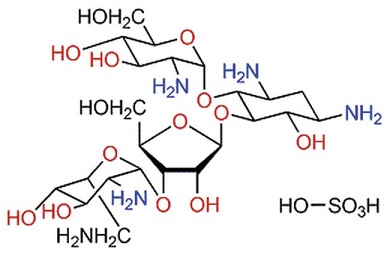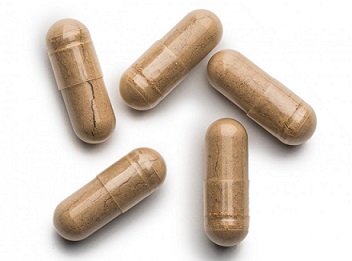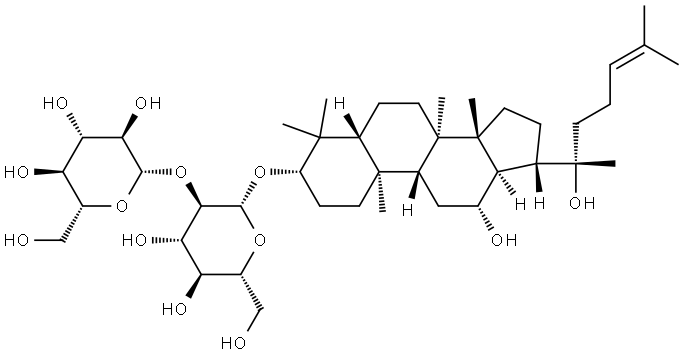Anticancer effects of ginsenoside Rg3
Oct 23,2019
Abstract
Cancer is a life-threatening disease with an alarmingly increased annual mortality rate globally. Although various therapies are employed for cancer, the final effect is not satisfactory. Chemotherapy is currently the most commonly used treatment option. However, the unsatisfactory efficacy, severe side-effects and drug resistance hinder the therapeutic efficacy of chemotherapeutic drugs. There is increasing evidence indicating that ginsenoside Rg3, a naturally occurring phytochemical, plays an important role in the prevention and treatment of cancer. The suggested mechanisms mainly include the induction of apoptosis, and the inhibition of proliferation, metastasis and angiogenesis, as well as the promotion of immunity. In addition, ginsenoside Rg3 can be used as an adjuvant to conventional cancer therapies, improving the efficacy and/or reducing adverse effects via synergistic activities. Ginsenoside Rg3 may be a widely applied natural medicine against cancer. To date however, there is no systematic summary available of the anticancer effects of ginsenoside Rg3. Therefore, in this review, all available literature over the past 10 years was reviewed and discussed in order to facilitate further research of ginsenoside Rg3.

1. Introduction
Cancer, characterized by uncontrolled cell growth, is considered to be the second leading cause of mortality (30% of total mortality) worldwide, which seriously threatens public health (1). A report released by the World Health Organization on the global situation of cancer in 2012 indicated that the annual new cancer cases reached 14,000,000 globally, with 8,200,000 deaths, and the number of new cases is expected to increase to 24,000,000 in the year 2035 (2). The global cancer burden is currently growing at an alarming rate, and there is no effective available treatment to date to curb the spread of cancer.
At present, the clinical management of cancer always involves several conventional modalities. Surgical resection is an effective method for the treatment of tumors in the early stages and for the clinical treatment of local tumors. However, surgery is often ineffective once tumors have spread or are diagnosed at an advanced and/or late stage of the disease. The prognosis remains poor due to tumor recurrence, diffusion and even metastasis following surgery (3). Radiotherapy is more effective than surgery in many cases. However, its application is limited by tumor metastasis and various side-effects. Recently, biotherapies such as immunotherapy, gene therapy and monoclonal antibody therapy have become a hotspot and provide a new method with which to prevent and treat tumors. Since many aspects are still unclear, tumor biotherapy has not been widely used (4). Chemotherapy is currently the most commonly used treatment option for cancer. However, the administration of traditional chemotherapeutic agents at high doses always induce significant non-selective toxicities, such as a reduction in bone density and immunosuppression, while low or moderate doses of these agents usually does not exert significant antitumor effects (5); in addition, there is the issue of acquired drug resistance. Therefore, the development of novel agents which can selectively induce cancer cell death without threatening normal cells is of utmost importance.
It has been generally recognized that natural products play a unique therapeutic role in the treatment of a number of diseases. Ginseng, the root of Panax ginseng C.A. Meyer, has been widely used in East Asia countries for thousands years as a natural tonic (6). Ginsenosides, extracted from Panax ginseng C.A. Meyer, are the main active components with a wide range of pharmacological activities. More than 100 types of ginsenosides have been isolated and determined from ginseng (7). Among these ginsenosides, ginsenoside Rg3 has been shown to have significant physiological activites (8), such as hepatoprotection, neuroprotection, cardiovascular-protection, promotion of immunity, as well as anti-fatigue, antioxidant, and most importantly, antitumor effects (9–14). There is increasing evidence indicating that ginsenoside Rg3 exerts antitumor effects in a number of cancer models, such as lung, liver and breast cancer (15–17). Furthermore, ginsenoside Rg3 may be a beneficial supplement, and the combined administration of ginsenoside Rg3 and conventional chemotherapeutic drugs may be more effective than either one being administered alone. The use of ginsenoside Rg3 in cancer therapy may aid in the prevention of toxicity and morbidity associated with conventional chemotherapy, even though the underlying mechanisms have not yet been fully elucidated (18). Thus, in this review, we aimed to provide a systematic summary on the cancer-preventive effects of ginsenoside Rg3.
2. Chemical structure
Ginsenoside Rg3 is a type of tetracyclic triterpenoid saponin, rich in red ginseng. The major ginsenosides, such as Rb1, Rb2, and Rd can be readily converted into ginsenoside Rg3, the production of which may increase from 0.37 to 1.32% (w/w) by heating (19). Due to the different spatial structures from C20 positions, there are two enantiomers, 20(R) and 20(S)-isomer (Fig. 1) (20). With differential configuration, their antitumor activities exhibit certain differences (21).

3. Effects of Rg3 in cancer models
Natural products have always been a very good source of drugs against cancer and have gained much attention lately. For example, paclitaxel is one of the most important antitumor natural agents isolated from the bark of Pacific yew tree (22). A study carried out in 1978 demonstrated the inhibition or prevention of carcinogenesis induced by various chemical carcinogens for ginseng (23). Ginsenoside Rg3 has been found to be an effective ingredient contributing to the anti-carcinogenic activity of ginseng. To provide a summary of the antitumor effects of ginsenoside Rg3, we collected data from previous scientific studies published over the last 10 years. Ginsenoside Rg3 has been shown to possess significant anticancer activity and it may be used alone (Table I) or as a supplement to chemotherapeutic drugs in order to improve the therapeutic efficacy and minimize or eliminate drug-induced toxicity and chemotherapeutic resistance (Table II).
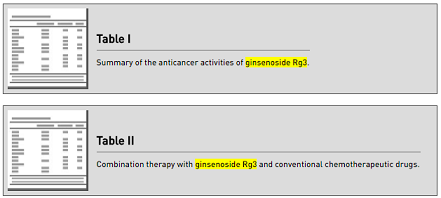
Treatment with Rg3 significantly has been shown to inhibit the growth of cancer in various cancer models. Ginsenoside Rg3 has been shown to exert cancer-preventive effects in both in vitro and in vivo studies in a dose- and time-dependent manner. The protective effects of Rg3 are mainly related to the induction of apoptosis, and the inhibition of proliferation, metastasis and angiogenesis (Table I). Table II displays the combined treatment effects of both Rg3 and several existing chemical drugs on cancer models. Ginsenoside Rg3 has been shown to enhance the antitumor effects of conventional chemotherapeutic agents and to reduce drug-induced toxicity and chemotherapeutic resistance in vitro and in vivo. Combination therapies using chemotherapeutic agents and ginsenoside may be an innovative and promising therapeutic strategy for the treatment of human cancer. However,the pharmacodynamic interactions between chemotherapeutic drugs and Rg3 warrant further investigation.
In addition, the hepatic arterial administration of Rg3 combined with local transarterial embolization (TAE) was shown to more effectively inhibited VX2 liver tumor growth than any mono-therapies, with the inhibition of angiogenesis and the induction of caspase-dependent apoptosis (24).
4. Suggested mechanisms of action of Rg3
Cancer is a class of diseases involving genetic damage which alters several intracellular biochemical signals and eventually results in uncontrolled cell growth (25). Drugs with antitumor activity, such as Rg3 may be able to alter these abnormal alterations through certain mechanisms. Although the anticancer activities of Rg3 have been widely investigated, the exact molecular mechanisms are not yet clear. The possible mechanisms of action of Rg3 based on the existing studies are described as follows:
Induction of apoptosis
Apoptosis, known as programmed cell death, is one of the principal mechanisms which maintains cellular homeostasis. In human cancers, tumor cells proliferate more rapidly than normal cells and always lose appropriate apoptotic control. This disruption of growth balance can promote tumor development (26). As shown in Table I, Rg3 can induce apoptosis via two major pathways: the mitochondrial-dependent intrinsic apoptotic pathway and the death receptor-dependent extrinsic pathway. Mitochondrial-dependent apoptosis involves a reduction in mitochondrial membrane potential, which results in the release of cytochrome c from the mitochondria, and the activation of caspase-9 and caspase-3, and finally, apoptosis (27). It has been shown that 20(S)-ginsenoside Rg3-induced apoptosis is dependent on the activation of caspase-3 and caspase-9, which is mediated by the PI3K pathway in HO-8910 human ovarian cancer cells (28). Reactive oxygen species (ROS) and Bcl-2 family members play an important role in the mitochondrial apoptotic pathway. Ginsenoside Rg3 has been shown to activate intracellular ROS generation and/or increase the ratio of Bax to Bcl-2 protein to induce mitochondrial-dependent apoptosis (16,29–33). p53 and nuclear factor (NF)-κB, two nuclear transcription factors, play a critical role in mitochondrial membrane potential through the regulation of the expression of apoptosis-related genes, such as inhibitors of apoptosis proteins (IAPs), X-linked inhibitor of apoptosis protein (XIAP) and Bcl-2. p53 is an important pro-apoptotic factor, while NF-κB is a type of anti-apoptotic factor. 20(S)-ginsenoside Rg3 exerts cytotoxic effects by activating the p53 pathway and subsequently inducing mitochondrial-dependent apoptosis (34). Moreover, ginsenoside Rg3 has been shown to inhibit mutant p53 and NF-κB signaling, possibly via the inactivation of extracellular signal-regulated kinase (ERK) and Akt to activate the mitochondrial death pathway, including the reduction of the ratio of Bcl-2/Bax expression, the disruption of mitochondrial membrane potential, the activation of caspase-3 and ROS generation (17,35). p53 and Bax have also been shown to play a role in the 20(S)-Rg3-induced apoptosis of HT-29 colon cancer cells via the activation of 5′ AMP-activated protein kinase (36).
The extrinsic apoptotic pathway is activated by specific ligands, such as Fas ligand, tumor necrosis factor-α (TNF-α), and tumor necrosis factor-related apoptosis-inducing ligand (TRAIL). These receptors can activate a caspase-8-dependent cascade to induce apoptosis (21). Another previous study demonstrated that ginsenoside Rg3 induced apoptosis through the activation of caspase-8 in the human gastric cancer cell line, AGS (37). The increased expression of Fas has also been observed in Rg3-treated A549 cells (15). In addition, the occurence of extrinsic apoptosis with the activation of endoplasmic reticulum stress mediates ginseng Rg3-induced apoptosis (38).
In addition, ion channels are crucial to tumor growth and cancer cell survival. Kim et al suggested that the blockade of TRPM7 channels played an important role in the Rg3-induced apoptosis of AGS cells, a human gastric adenocarcinoma cell line (39).
Inhibition of proliferation
Ginsenoside Rg3 has been shown to exert significant inhibitory effects on cancer cell proliferation. In LNCaP and PC3 human prostate carcinoma cell lines, 20(S)-ginsenoside Rg3 was shown to exhibit good growth inhibitory activity, which may be associated with the modulation of mitogen-activated protein (MAP) kinases (40). Rg3 inhibited EGFR activation and its downstream signal transduction to suppress the growth and proliferation of lung cancer cells A549 (15). Another study on melanoma suggested that 20(R)-ginsenoside Rg3 inhibited cancer cell proliferation by the deactivation of EGFR and the decrease of fucosyltransferase IV (FUT4)/Lewis Y (LeY) expression (41). In addition, the protein expression of proliferating cell nuclear antigen (PCNA), serine/threonine kinase receptor associated protein (STRAP) and that of proteins related to mitosis and DNA repair was shown to be suppressed in 20(S)-ginsenoside Rg3-treated human colon cancer cell lines (42). Ginsenoside Rg3 has also been shown to inhibit the nuclear translocation of β-catenin, an oncogene, and the proliferation of colon cancer cell lines (43). Microarray hybridization analysis has shown 20(S)-ginsenoside Rg3 inhibits the proliferation of HCT116 cells, mostly by regulating the Eph/ephrin pathway and the gene expression of anchor protein 8-like (AKAPA8L) and phosphatidylinositol transfer protein alpha (PITPNA) (44). Additionally, chronic treatment with 20(S)-ginsenoside Rg3 at a sub-apoptotic concentration has been shown to induce senescence-like growth arrest in human glioma cells through the Akt and p53/p21 pathways (45).
Cell cycle arrest involves a set of events, resulting in cell growth inhibition. 20(S)-ginsenoside Rg3 has been shown to have an anti-proliferative activity in MCF-7 human breast cancer cells by arresting the cell cycle at the G1-phase (46). p53, a tumor suppressor, plays an important role in mediating cell cycle arrest and the DNA damage response or apoptosis, as well as p21, a cell cycle inhibitor, downstream of p53. 20(S)-ginsenoside Rg3 has been found to have the ability to inhibit mouse double minute 2 homolog (MDM2), a negative regulator of p53, to activate the p53/p21 pathway and subsequently induce cycle arrest at the G0/G1 phase in gallbladder cancer cells (34). Moreover, was previously demonstrated that in both A375 and C816 melanoma cell lines, 20(R)-ginsenoside Rg3 inhibited proliferation and induced cell cycle arrest at the G0/G1 phase by decreasing the expression of histone deacetylase (HDAC)3 and increasing p53 acetylation and transcriptional activity (47).
Inhibition of metastasis
Metastasis is a complex process through which cancer cells spread from a primary site to form tumors at other distant parts of the body. Tumor metastasis is a major cause of tumor recurrence and mortality, in many types of cancer, such as breast cancer (48). Matrix metalloproteinases (MMPs), which can degrade the extracellular matrix and basement membrane, play an important role in tumor metastasis, and MMP-2 and MMP-9 are of particular importance in these events (49). As previously demonstrated, the Rg3-induced downregulation of MMP-9 appears to be associated with the decreased invasive capacity of SKOV-3 ovarian cancer cells (50). The suppression of MMP-13 by the p38 MAP kinase signaling pathway has been shown to play a role in the inhibition of the metastasis of B16F10 cells by 20(S)-ginsenoside Rg3 in (51). In addition, ginsenoside Rg3 has been shown to inhibit the migration of SW480 colon cancer cells by suppressing NF-κB activity and the expression of NF-κB-regulated gene products, including MMP-9, cyclooxygenase (COX)-2 and c-Myc (52).
EMT is also an important mechanism involved in cancer metastasis. 20(R)-ginsenoside Rg3 and 20(S)-ginsenoside Rg3 possess the ability to inhibit tumor metastasis by the suppression of EMT. In a previous study, 20(R)-ginsenoside Rg3 suppressed lung cancer migration or/and invasion by inhibiting TGF-β1-induced EMT accompanied by the inactivation of MMP-2, p38 MAPK and Smad2 (53). In another study, 20(S)-ginsenoside Rg3 effectively suppressed hypoxia-induced EMT, inhibiting ovarian cancer metastasis (54).
In the breast cancer cell line, MDA-MB-231, 20(S)-ginsenoside Rg3 was reported to exert anti-metastatic effects by inhibiting the expression of C-X-C chemokine receptor type 4 (CXCR4), which is a vital molecule in migration (48). Moreover, 20(S)-ginsenoside Rg3 has been shown to decrease the incidence of metastasis by inhibiting the expression of aquaporin 1 (AQP1) in PC-3M prostate cancer cells (55).
Inhibition of angiogenesis
Tumor angiogenesis is a process involving the formation of new blood vessels, which is essential to tumor growth and metastasis by supplying oxygen and nutrients. Rg3 has been found to inhibit tumor angiogenesis via the suppression of vascular endothelial growth factor (VEGF) expression by blocking multiple hypoxia-induced and angiogenesis-related signaling pathways in the human esophageal carcinoma cell line, Eca-109, and in the renal cell carcinoma cell line, 786-0 cells (56). In addition, both in vitro and in vivo experiments have demonstrated that 20(R)-ginsenoside Rg3 significantly inhibits human umbilical vein endothelial cell (HUVEC) proliferation and VEGF- and basic fibroblast growth factor (bFGF)-stimulated angiogenesis (57). Endothelial progenitor cells (EPCs) are closely related to tumor angiogenesis by promoting angiogenic factors, such as VEGF. In human umbilical cord blood (hUCB)-derived CD34-positive stem cells, treatment with Rg3 was shown to inhibit EPC differentiation and tube formation via the VEGF-dependent Akt/endothelial nitric oxide synthase (eNOS) signaling pathway (58). Rg3 also was found to effectively inhibit EPC proliferation and VEGF-induced angiogenesis in vivo through multiple signaling cascades, such as p38 MAP kinase (59).
Furthermore, vasculogenic mimicry (VM), a novel tumor microcirculation system different from classical endothelium-dependent angiogenesis, plays a critical role in tumor progression. Guo et al found that ginsenoside Rg3 effectively inhibited VM formation in pancreatic cancer by inhibiting the expression of particular genes, including VE-cadherin, EphA2, MMP-2 and MMP-9, both in vitro and in tumor xenografts (60).
Inhibition of multidrug resistance (MDR) and increase of chemosensitivity
Some studies have suggested that combination treatment may be more lead to an improved treatment efficacy with decreased toxicity by exerting synergistic effects, although the exact mechanisms involved remain unclear (18,61). For example, As2O3 in combination with Rg3 has been shown to significantly inhibit NCI-H1299 lung cancer cell proliferation and to prolong the survival of tumor-bearing mice (62). Rg3 has been shown to suppress doxorubicin-induced cardio-toxicity both in vitro and in vivo, possibly by activating the NF-E2-related factor 2 (Nrf2)/antioxidant responsive element (ARE). and PI3/Akt pathways (63). 20(S)-ginsenoside Rg3 has also been shown to protect normal cells against cyclophosphamide (CP)-induced genotoxity through antioxidant activity (6). In Lewis lung carcinoma and ovarian cancer models, the co-administration of ginsenoside Rg3 was shown to effectively enhance the inhibitory effects of CP on tumors and to reduce the occurrence of side-effects (64,65). Ginsenoside Rg3 has also been shown to improve the antitumor activity of paclitaxel and cisplatin in an animal model of esophageal squamous cell carcinoma (66). In addition, 20(S)-ginsenoside Rg3 increases the oral bioavailability of paclitaxel and then improves the antitumor activity of paclitaxel (67).
Rg3 enhances the chemosensitivity of cancer cells to chemical drugs or/and can help cells to overcome MDR, which may partly explain the mechanisms of combination therapy. Previous studies have indicated that 20(S)-ginsenoside Rg3 is a highly effective modulating agent in reversing MDR in drug-resistant P388 leukemia cells and human fibrocarcinoma KBV20C cells specifically (68,69). Combination therapy using Rg3 and the conventional chemotherapeutic agent, docetaxel, has been shown to significantly enhance the sensitivity of cancer cells and to decrease drug resistance in prostate cancer and colon cancer cells via the inhibition of NF-κB (70,71). Moreover, Rg3 has been shown to enhance the susceptibility of the colon to cisplatin by inhibiting HO-1/NQO-1 expression. Moreover, Rg3 also decreased cisplatin-induced tissue damage in the kidneys and liver by preventing cisplatin-induced intracellular ROS generation (72). 20(S)-ginsenoside Rg3 has also been shown to increase TRAIL receptor DR5 expression and sensitivity to TRAIL in hepatocellular carcinoma (HCC) cells, such as HepG2 (73). 20(S)-ginsenoside Rg3 is also capable of sensitizing doxorubicin-treated liver cancer cells death by inhibiting doxorubicin-induced autophagy possibly by blocking lysosomal function (74).
Promotion of immunity
Rg3 also plays a role in the improvement of host immunity in tumor-bearing animal models. A previous study suggested that a ginsenoside Rg3-fortified red ginseng preparation significantly suppressed tumor growth in H460 tumor-bearing mice by immunopotentiation (75). In addition, treatment with Rg3, has been shown to markedly enhance (P<0.05) cellular immunity by stimulating ConA-induced lymphocyte proliferation and the secretion of cytokines [interleukin (IL)-2, interferon (IFN)-γ] in the immune organs and serum of hepatoma H22-bearing mice (76). Moreover, Rg3 has been shown to augment innate immunity and IFN-β expression via the upregulation of DDX3 and the activation of the TANK-binding kinase 1 (TBK1)/inhibitor-κB kinase ε (IKKε)/interferon regulatory factor 3 (IRF3) pathway (77). Therefore, Rg3 may be a potent immunomodulatory candidate for the treatment of cancer.
5. Clinical studies
Although many studies have demonstrated a clear anticancer activity of Rg3 in various cancer cell lines or/and xenograft tumor models, the efficacy of Rg3 in human cancer requires further investigation. Shenyi capsule (ginsenoside Rg3 monomer preparation), a class I new drug in traditional Chinese medicine, is being used clinically in the treatment of various types of cancer, such as lung cancer, breast cancer and gastrointestinal tumors in China (78). A prospective, randomized, controlled study using 133 non-small cell lung cancer cases suggested that Shenyi capsule, particularly in combination with chemotherapy, improved the post-operative lifespan of patients mainly by enhancing the immune function and inhibiting angiogensis (79). Another randomized trial of 60 advanced esophageal cancer cases found that the combination of chemotherapy with Shenyi capsule was effective in improving the quality of life of patients and 1 year survival rates. In addition, a meta-analysis involving 274 female breast cancer patients in China also showed that the combination treatment group exhibited significantly attenuated leucopenia. However, there were no significant differences in the total response rate compared with the chemotherapy groups (80,81).
In general, the published clinical studies suggested that Rg3 was a good antitumor agent by improving the immune function and the quality of life of cancer patients. However, there has been no strong evidence to confirm the efficacy of Rg3. Further, large controlled and highly qualified clinical trials are required in order to better guide clinical applications.
6. Conclusions
Ginsenoside Rg3 displays significant antitumor activities in several types of cancer both in vitro and in vivo. The molecular mechanisms of tumor inhibition employed by ginsenoside Rg3 mainly involve the induction of apoptosis, and the inhibition of proliferation, metastasis and angiogensis, and the promotion of immunity (Fig. 2). Furthermore, experiments have demonstrated that Rg3 is relatively safe for use in the marrow, heart, lung, liver, kidney and nervous system (82). Long-term toxicological studies on beagle dogs and rats also confirmed that 20(S)-ginsenoside Rg3 was non-toxic and well-tolerated (83,84). Ginsenoside Rg3 has also been shown to significantly decrease some environmental carcinogen-induced DNA damage, such as N-methyl-N′-nitro-N-nitrosoguanidine (MNNG) and benzo[a] pyrene (85,86). These results make ginsenoside Rg3 an attractive candidate for cancer prevention. Combination therapy with conventional cancer treatments, such as chemotherapy and surgery has been suggested to be more effective. Rg3 improves the chemosensitivity of tumor cells to chemical drugs, reverses MDR and decreases toxicity. Additionally, Rg3 combined with TAE, more effectively inhibits tumor growth. Apart from these, a recent study found that 20(S)-ginsenoside Rg3 induced the apoptosis of HepG2 cells, accompanied by the induction of autophagy via mitochondrial and Ca2+-related pathways, which decreased the survival of cancer cells. Thus, co-treatment with autophagy inhibitors and Rg3 would be beneficial (87). Clinical trials still demonstrate that ginsenoside Rg3 is an effective antitumor agent. Therefore, ginsenoside Rg3 is gaining more attention as an anticancer drug due to its favorable safety and efficacy.

However, there are still several aspects limiting the use of Rg3: i) its mechanisms of action have not yet been fully established. For example, ginsenoside Rg3 induces strong genotoxicity and DNA damage in human osteosarcoma cells. However, whether these genotoxic effects are directly associated with cell cycle arrest and apoptosis is not clear (85). Further studies are warranted to determine the mechanisms through which the different signaling pathways are orchestrated and and those through which the synergistic antitumor activities of ginsenosides and conventional cancer treatments are realized in order to fully understand the benefits of Rg3. ii) Its poor aqueous solubility and low oral bioavailability (88). Although studies have been performed to explore a method to solve this problem, for example, 20(S)-ginsenoside Rg3-loaded magnetic human serum albumin nanospheres [20(S)-Rg3/HSAMNP] were created and were shown to markedly enhance the efficiency of HeLa cervical cancer cell inhibition when combined with hyperthermia (89), and liposomal ginsenoside Rg3 showed increased anticancer activity in vitro compared to the Rg3 solution (90), it is necessary to evaluate the efficacy of these optimized therapy in vivo. It may be possible to develop novel Rg3 analogues with improved efficacy, pharmacokinetics and bioavailability profiles. iii) Currently, the evidence of Rg3 efficacy is not yet conclusive in humans. There is a significant need to perform further, larger cohort clinical studies to confirm its efficacy for better application in the clinic.
In conclusion, Rg3 has great potential for use as a broad-spectrum anticancer drug and an effective adjuvant to cancer therapies in the future.
Acknowledgments
This study was supported by funds from the National Natural Science Foundation of China (81502515 and 81503332), Shanghai Natural Science Foundation (no. 13ZR1431900), Shanghai Municipal Health and Family Planning Commission (nos. 20134173, 20134090 and ZYXK2012010), Key Disciplines Group Construction Project of Pudong Health Bureau of Shanghai (no. PWZxq2014-12), and the Open Research Fund of State Key Laboratory Breeding Base of Systematic Research, Development and Utilization of Chinese Medicine Resources (no. ME2016012).
- Related articles
- Related Qustion
- Ginsenoside Rg3: Potential and Molecular Mechanisms of in Cancer Treatment Apr 8, 2024
Ginsenoside Rg3 exhibits potent anti-cancer effects by inducing apoptosis, inhibiting proliferation, and demonstrating significant anti-angiogenic properties.
- Ginsenoside Rg3: mechanism of action, pharmacodynamic and safety Nov 10, 2023
Ginsenoside Rg3 inhibits angiogenesis through VEGF/VEGFR2 modulation and shows safe profiles in studies.
The aim of this study was to evaluate the antileishmanial effects of topical liposomal paromomycin sulfate (PM) in Leishmania major-infected BALB/c mice. Liposomes containing 10 or 15% PM (Lip-PM-10 and Lip-PM-15, respectively) were prepare....
Oct 23,2019APIDehydroepiandrosterone is an important precursor hormone, and is the most abundant circulating steroid present in the human body. It has little biological effect on its own but has powerful effects when converted into other hormones such as....
Oct 23,2019APIGinsenoside Rg3
14197-60-5You may like
- Diosgenin:Uses,Functions and Synthesis
Dec 12, 2025
- Biosynthesis of Cyclopamine from Cholesterol
Dec 10, 2025
- Synthesis of ribociclib
Dec 10, 2025
- GINSENOSIDE Rg3
-

- $0.00 / 1kg
- 2025-11-04
- CAS:14197-60-5
- Min. Order: 1kg
- Purity: 0.99
- Supply Ability: 1000kg
- Ginsenoside Rg3
-

- $150.00 / 1kg
- 2025-05-23
- CAS:14197-60-5
- Min. Order: 1kg
- Purity: 99%
- Supply Ability: 500kg
- Ginsenoside Rg3
-
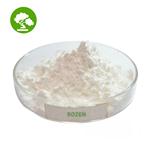
- $0.00 / 25kg
- 2024-04-12
- CAS:14197-60-5
- Min. Order: 1kg
- Purity: 98%
- Supply Ability: 2000ton




